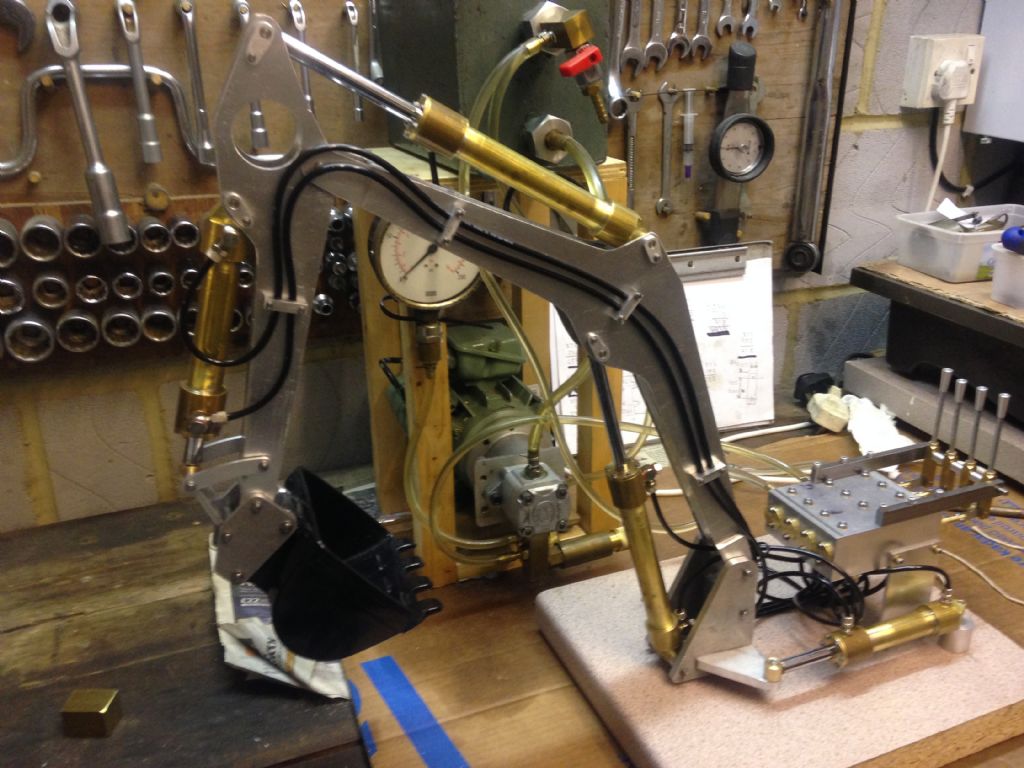A fascinating and very unusual project!
There may be a lot in modern engineering that could inspire model-engineering versions, but perhaps the older machinery's attraction is the "works" working visibly, not hidden away.
The only other example I can think of in this genre, and I forget the constructor's name unfortunately, is a sizeable model of one of the huge walking-draglines formerly used in the Northamptonshire iron-ore quarries. Its builder operated it from a full-scale replica of the prototype's driving-seat and controls, and a video-camera in the model cab gave us a scale driver's-eye view as it gracefully moved heaps of cat litter about. That display also answered for me how those excavators actually "walked" – slow hops with both feet down.
Back in the 1960s, something rather thinly called "fluidics" was all the rage for some years, but probably replaced in most applications by electronics. It took the hydraulics as used in earth-moving machines a stage further into the realms of logic-circuitry for controlling the power hydraulic or pneumatic systems. I don't know if any model-engineers have experimented with fludics, which usually use compressed-air.
John Reese.





